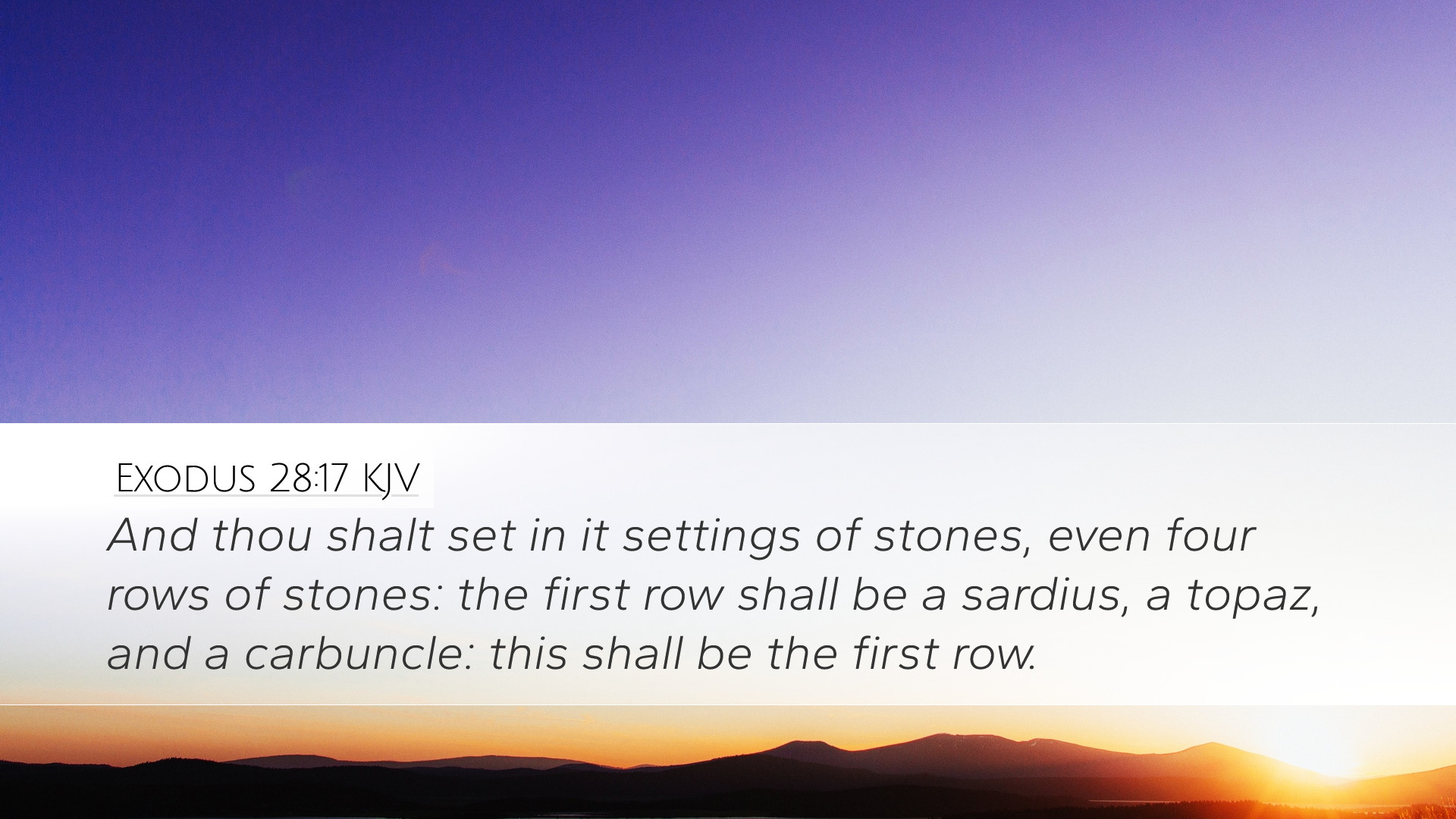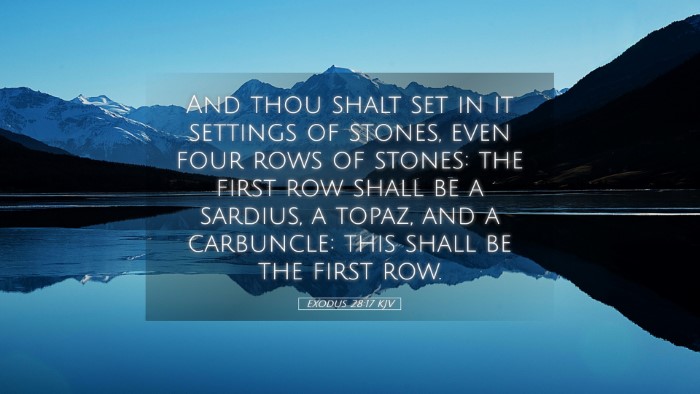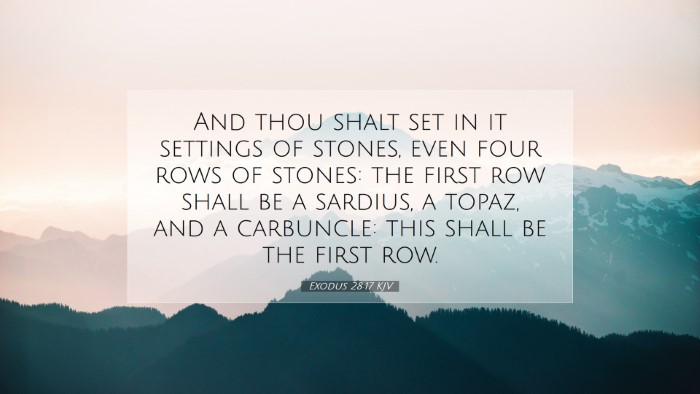Commentary on Exodus 28:17
Text of the Verse: "And you shall put settings of stones in it, four rows of stones; a row of sardius, topaz, and carbuncle shall be the first row;" (Exodus 28:17, ESV)
Introduction
Exodus 28 depicts the instructions for the garments of the High Priest, emphasizing their significance in worship and service to God. Specifically, verse 17 describes the setting of precious stones in the breastplate, which serves both an aesthetic and symbolic function in the priestly attire. The commentaries of Matthew Henry, Albert Barnes, and Adam Clarke provide a thorough exploration of its spiritual implications, historical context, and theological significance.
The Nature of the Breastplate
The breastplate of judgment, adorned with twelve precious stones, serves as a representation of the twelve tribes of Israel (Henry). Each stone symbolizes not only beauty but also the grace of God manifesting through the tribes. The breastplate acts as a crucial element in the priest's engagement with the Divine and the community he serves.
Significance of the Stones
The first row of stones consists of sardius, topaz, and carbuncle. Each stone is significant both numerically and symbolically:
- Sardius: This stone is linked to the tribe of Reuben, representing the strength and ferocity of its progenitor, Jacob’s firstborn (Barnes).
- Topaz: Associated with the tribe of Simeon, it is often interpreted as a stone that signifies loyalty and attachment (Clarke).
- Carbuncle: Traditionally linked with the tribe of Levi, emphasizing the purity and dedication required of those in priestly roles (Henry).
These stones not only signify individual tribes but also embody broader theological themes of redemption, unity, and the individual believer's identity within the larger body of Christ.
The Configuration of the Stones
The arrangement of these stones in four rows reflects God’s order and design in both creation and His covenant with Israel. Each row signifies God’s sovereignty and the structured approach He has in dealing with humanity (Barnes). The four rows can be seen as a representation of the Four Gospels, illustrating the completeness of God’s revelation through Christ.
The Role of the High Priest
The High Priest, donning this breastplate, was given the responsibility of bearing the names of the tribes before God (Henry). This powerful action symbolized intercession and representation, where the priest stood as a mediator between God and His people. Through this act, believers are reminded of Christ’s ultimate priestly function in the New Testament, being our advocate before the Father.
Symbolism and Theological Implications
The visual elements of the breastplate serve as reminders of God’s love and care for His people. The use of precious stones reflects not just material value but a deeper intrinsic worth found in one’s identity as a child of God (Clarke). Each stone shines forth the glory of His grace that adorns believers, illuminating their lives with true beauty and worth.
Application for Believers
The instruction given in Exodus 28:17 carries enduring significance for modern-day believers. Just as the High Priest bore the tribes upon his heart, every believer is tasked to carry the burdens and cares of others to God through prayer (Barnes). This verse urges pastors and church leaders to remember their call to shepherding and intercession, continually bringing members of their congregations before the Lord.
Additionally, the breathtaking beauty of the priestly garments invites Christians to reflect on the beauty of holiness and the importance of approaching God with reverence. The richness found in the details signifies the value of worship rendered to God, emphasizing that even the simplest act of approach ought to be done with profound respect and honor (Henry).
Conclusion
Exodus 28:17 encapsulates essential truths regarding God’s covenantal relationship with Israel and prefigures the High Priesthood of Christ. Through the rich symbolism of the stones and the order of placement, we glean insights into divine intercession, the beauty of holiness, and the communal identity of believers. By studying these elements, pastors, students, and theologians can deepen their understanding of priestly duties and the glory of God reflected in our lives today.


